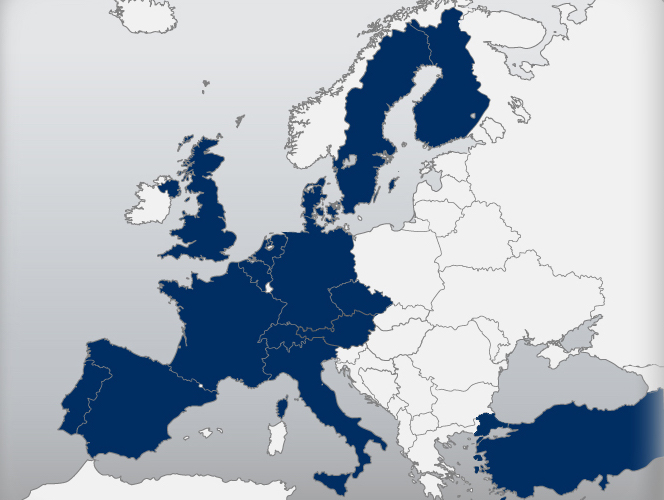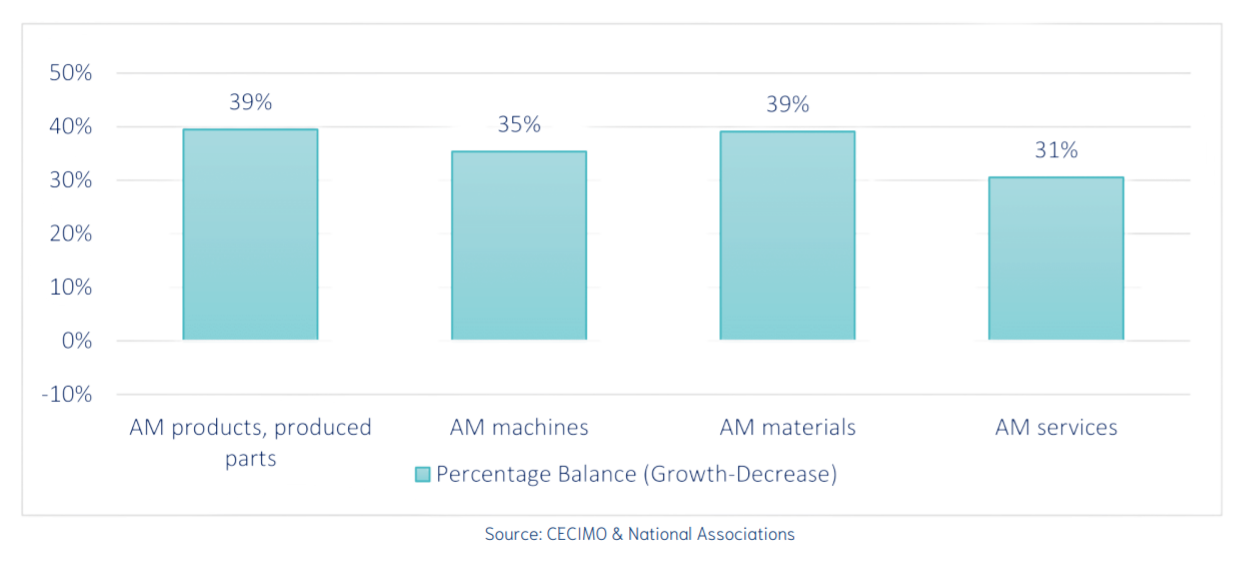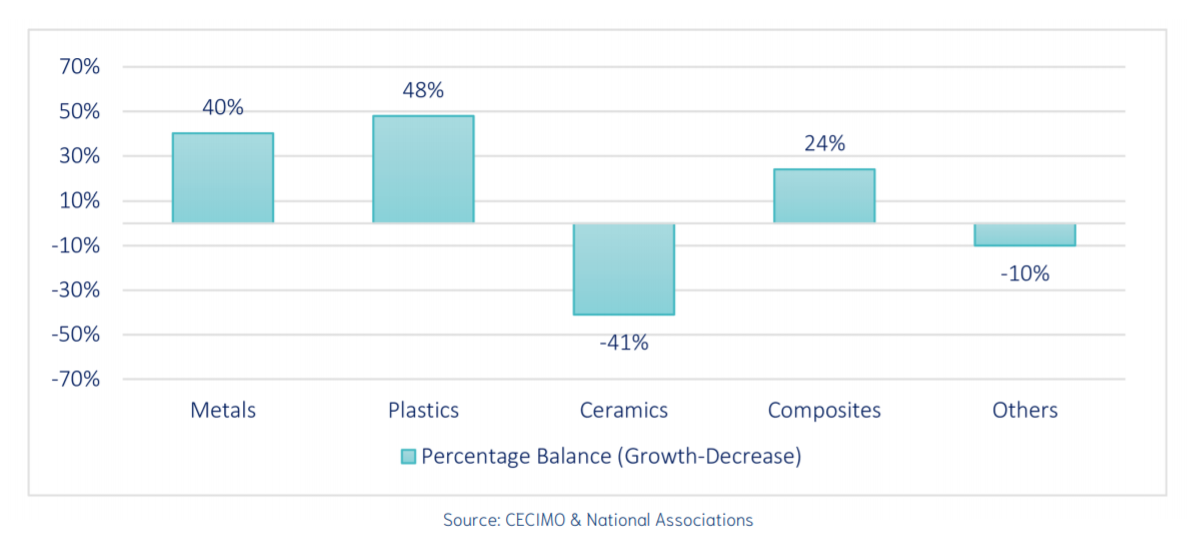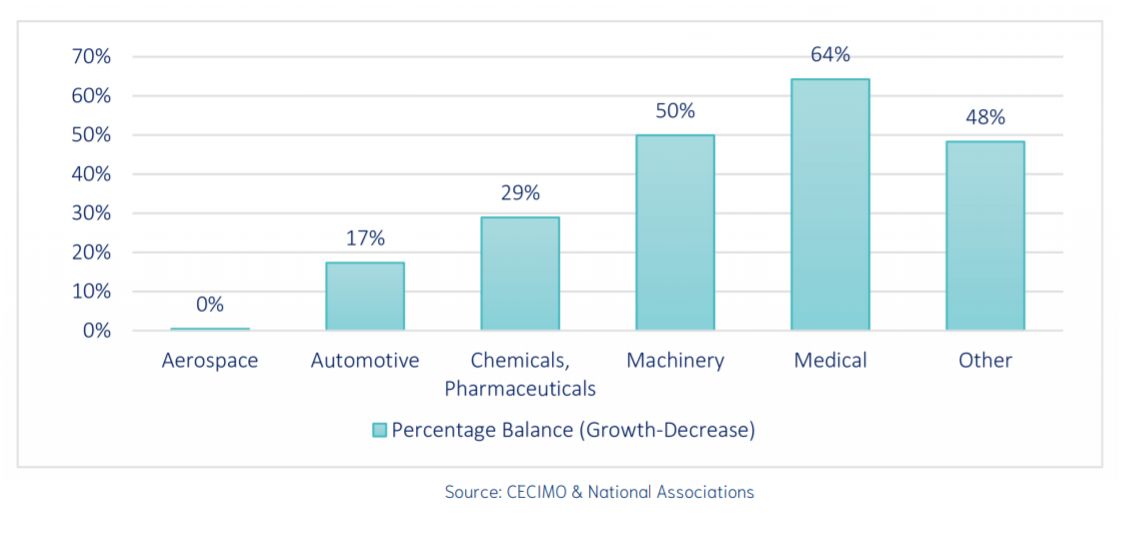CECIMO, the association of machine tool and manufacturing technologies, has released the second round of results from its European Additive Manufacturing Survey.
The survey, which aims to assess key market trends in the additive manufacturing sector, collected 59 responses from national associations across Europe to shed light on the continent’s 3D printing business cycle and predictions regarding production, demand, and investment.
While CECIMO’s findings reveal expected growth in all additive manufacturing categories, the survey predicts the highest growth (39%) will come from 3D printed products and materials in the near future.

Championing 3D printing
CECIMO has represented the interests of machine tool associations since 1950, and claims to speak for 98 percent of all European tool producers. Over the past six years, the organization has turned its attention to advancing the adoption of 3D printing as a means to bolster Europe’s manufacturing prowess.
In 2017, CECIMO published a 20-page additive manufacturing strategy that made recommendations for policies to accelerate the industrialization of 3D printing across Europe. A year later, the organization partnered with the European Powder Metallurgy Association (EPMA) to promote the adoption of 3D printing throughout established manufacturing industries, and also formed a new additive manufacturing committee to improve dialogue between policy makers and the 3D printing industry.
Since then, CECIMO has pushed for tariff-free trade between the European Union (EU) and the US to help facilitate the growth of the additive manufacturing sector, and has chaired a forum at the AM European Conference (AMEC) where it made the case for uniform industry standards.
In February, the organization released the first round of results from its European Additive Manufacturing Survey. The findings indicated that additive manufacturing exports are growing, with the technology showing particular potential within the healthcare sector.

The second round of survey results
The latest findings of CECIMO’s European Additive Manufacturing Survey suggest a positive growth path within all 3D printing categories – products and parts, machines, materials, and services. Domestic growth of products and produced parts, alongside materials, is expected at a rate of 39 percent in the near future, closely followed by machines at 35 percent, and services at 31 percent.
Exports to foreign markets over the next six months are predicted to follow a similar trend, with 3D printed products and parts expected to grow by 43 percent. Although, additive manufacturing services are expected to rise by 38 percent, ahead of machines (36 percent) and materials (28 percent), exceeding expectations within the European market.
Delving deeper into the projected growth of 3D printing materials, the results show that the sale of plastics will increase across the continent by 48 percent, indicating a comparatively stronger growth path than metals, of which sales are predicted to rise by 40 percent. Composites are also expected to grow, while ceramics, however, are seeing a negative trend, with sales expected to nosedive by some 41 percent.

In terms of buying sectors, the results indicate a continuing growing demand within the medical industry, likely as a result of 3D printing’s contribution to the fight against the Covid-19 pandemic, which is projected to rise by 64 percent. The chemicals and pharmaceuticals sector also shows strong growth, with orders set to increase by some 29 percent. A rebound in industry has also prompted a rise in demand within the machinery and automotive sectors.
According to CECIMO’s survey results, the growth path for additive manufacturing is expected to continue over the next six months as a result of the positive indications for both domestic and international business regarding the technology. The organization is planning the next round of its additive manufacturing survey to take place between September and October this year, with results expected by mid-November, 2021.

European backing for 3D printing
Over the years, the EU has supported the adoption and industrialization of 3D printing across a wide array of additive manufacturing projects. In fact, in July last year, the European Patent Office revealed a global surge in the number of 3D printing patent applications, with Europe revealed as the leading content having submitted 47 percent (7,863) of the applications.
The EU has previously backed projects exploring the use of additive manufacturing technology to purify vaccines, for end-use military applications, and to demonstrate circular economy manufacturing processes. In February, an EU-backed project coordinated by the European Welding Federation (EWF), the SAM consortium, published its European Roadmap for Additive Manufacturing to tackle skill gaps across the 3D printing sector.
In May, the EU-funded Meso-Brain project announced the development of 3D nanoprinting techniques that could potentially revolutionize neuroscience and the treatment of diseases like Parkinson’s and dementia. Just last month, a new EU-backed project involving German electronic 3D printing firm Neotech AMT, AMPERE, was launched to develop reliable and scalable hybrid 3D printing processes for producing multifunctional 4D mechatronic systems.
Nominations for the 2021 3D Printing Industry Awards are now open, have your say who is leading the industry now.
Subscribe to the 3D Printing Industry newsletter for the latest news in additive manufacturing. You can also stay connected by following us on Twitter and liking us on Facebook.
Looking for a career in additive manufacturing? Visit 3D Printing Jobs for a selection of roles in the industry.
Subscribe to our YouTube channel for the latest 3D printing video shorts, reviews and webinar replays.
Featured image shows CECIMO’s European Additive Manufacturing Survey. Image via CECIMO.


